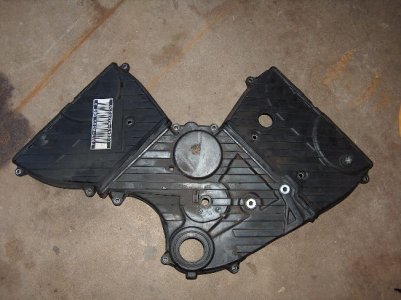I did a no-no today that set me back some:
I turned the crank clockwise with the tensioner pulley loose, with new belt on, and that caused the crank to slip two teeth on the timing belt. So I removed the new belt, and heard a distinct "clunk" sound as the rear exhaust cam rotated slightly and the valves hit the piston. So I turned the crank counter-clockwise to approximately where it should have been, and plan to reinstall the belt, rotate everything back to TDC, and start the alignment from scratch.
I did consider loosening all the valve adjustment screws, and I do have the special tool to do that, but I think that might be unnecessary. I'm quite sure there isn't serious damage, as everything was turned gently by hand, and the crank now isn't pushing piston against valve.
I just hope that I get the approximate crank angle close enough so that the whole assembly can go back to TDC without interference.
If it does not, then I suppose I have no choice but to loosen all the valve adjustment screws to realign everything back, although I suspect that may be more difficult than it seems.
The reason I was
still fiddling with it even though it ain't broke was that the paint marks on the sprocket was really hiding the [ -- marks, so when I looked at it some more, it really seemed like the rear exhaust cam was off by one tooth: the classic mistake. So now it's all back to square one, and I have forever lost any proof that it was already wrong when I took it apart.
I want to use some paint thinner to remove those paint marks from the factory, and put on my own marks based on the [ -- markings on the sprockets.
What do the seasoned experts think? There's 95% chance the camshaft/crankshaft alignment is off by no more than 1 tooth right now, so I should be able to slip the belt back on and take it back to TDC with no interference. But is this the time to drain the coolant and oil, and then remove the camshafts and cylinder heads? I do have all the tools for that, and I even have the 1% accuracy Snap-On torque wrench to put the cylinder heads back on with new gasket and all. I've even spoken to
Portflow Design, in person, about them doing a head refresh for this C32 engine, and I feel they can do a good job, since I did check the quality of their finished work right there at the factory. Although, what do I know about what constitutes good cylinder head work? Not much.






